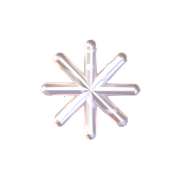Week 9
2023 29 Feb
Rendering
When I export the material from Substance, it doesn’t align correctly with the model in C4D. Consequently, the pattern on the model appears distorted during rendering, as it’s not properly mapped onto the mesh.
The issue arises because the individual who prepared the materials unwrapped the UV independently and combined all model UVs into a single PNG file. Consequently, I’m unable to separate the model during animation. This leads to complications when applying the material to a model with a different UV mapping.
Therefore, I asked for help from Natalia, who explained some portals from C4D. It is a similar system in Unreal. Some textures’ portal’s names are different, and I did not understand them.


Here are some reminders for myself when setting the materials from Adobe 3D Substance to C4D.
- Export as PBR format from Adobe 3D substance

2. There is a project configuration function
- Create a plain 3D model.
- Use the old file, Right-click the materials layer, and create a smart material ( rename )
- Open a new file or use configuration ( file edit )
- Choose direct X
This will allow me to draw a plain pattern that can be applied to any model without limitation in UV.

3. Setting Universal materials in C4D
In C4D, the system is very different in Maya.
I use the node editor to set the textures. Especially for the emission channel, we muse to create an extra portal to connect the image, which is called texture emissive.
- Also to check ‘ Surface Brightness ‘
- lower the power of emission

Work in progress in texture
Even though we have a skilled team member handling textures, it’s my responsibility to export and ensure their consistency in rendering.
Various factors can lead to different results across different rendering and preview systems, with lighting playing a significant role in surface color variation.

Problem we faced:
Our group members use Adobe 3D Painter to create texture. I am going to export them in C4D. But she unwrapped the model and I cannot match the model ( haven’t unwrapped UV ). Therefore, to match her materials, we need to redo the animation based on her model which fits her unwrapped UV.

The result after we fix the materials’ position.

In group projects, animators often face challenges with different software, especially when each person has their own skills and expertise.
Collaborating with students from various professions presents an excellent opportunity to learn from one another and tackle challenges collectively. Through this experience, we can broaden our skill sets, exchange knowledge, and develop problem-solving abilities together.

I’m amazed by the materials crafted by our team members from the visual effects department for our project. It’s fascinating to learn from each other, like discovering how she created patterns using Adobe 3D Substance. Additionally, collaborating to build a materials library together and applying them to the plants for future use in animation scenes sounds exciting.
Other reflection:
Working with talented students is really inspiring for me. They bring fresh ideas and skills that I can learn from. It’s amazing to see how we can bounce ideas off each other and come up with something really cool together. I feel lucky to be part of a team where we all support and inspire each other to do our best work.


From the comparison picture here, it is obvious that lighting plays a key role in showcasing the details of texture.
Well……. Overall, the best part is enjoying every rendering, especially when I get to experiment. Sometimes, warm lighting makes things look better, and I have to ensure the flowers match the design concept. It’s all about finding the right balance and testing, even if it takes a while to render everything beautifully.

Rendering for final artifact video
Since animation has limitations in Unity, we can still add more animation to the final video using rendering in C4D.
This is my favorite part because it gives us creative freedom to explore different sequences and think about how to showcase the 3D models we’ve created. It’s exciting to see our work come to life in the final video!
C4D flower blooming
In the final presentation video, I wanted to capture the slow movement of flowers blooming. So, I searched on YouTube to learn how to use C4D to create a natural flower blossom.
Thankfully, I quickly picked up how to bend the petals in C4D without having to do it individually for each one. This saved a lot of time and made the process much smoother!

Mograph Plain Effector C4D
In our project, one of our plants is made of digital pixel cubes. Before revealing the whole plant, I wanted to show how the cubes come together to form the flowers.
So, I looked on YouTube to learn how to animate multiple cubes moving using tags, instead of doing each cube one by one. This way, it’s faster and the animation looks smoother, making our project look even better.


Tips I make notes here as reminders for myself:
- Use plain tag
- Add Linear field
- Adjust the remapping inside the tag of the linear field
- Add delay tags would have a ladder style for the position of the animation





Video editing
I’m also responsible for video editing in this project. After rendering all the clips, I used After Effects to edit our video. Additionally, I add text, titles, and motion graphics to explain the project’s details and make it more engaging for viewers.

Working in Progress video
In this video, which is still a work in progress, our group members really like it! I do too. Haha, I have to say, it’s the most exciting part to receive encouragement from others.
